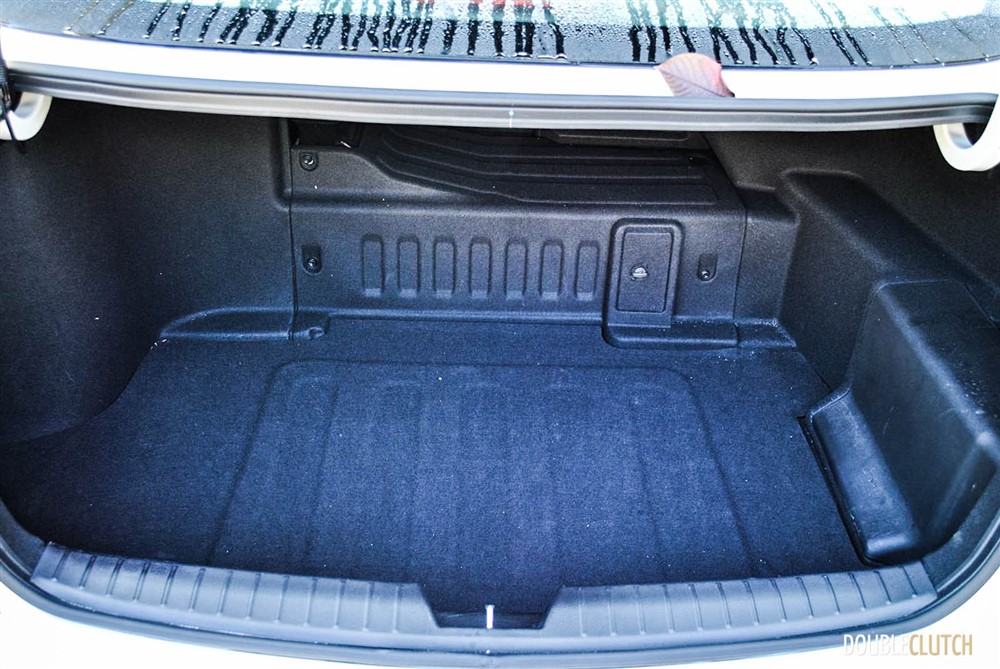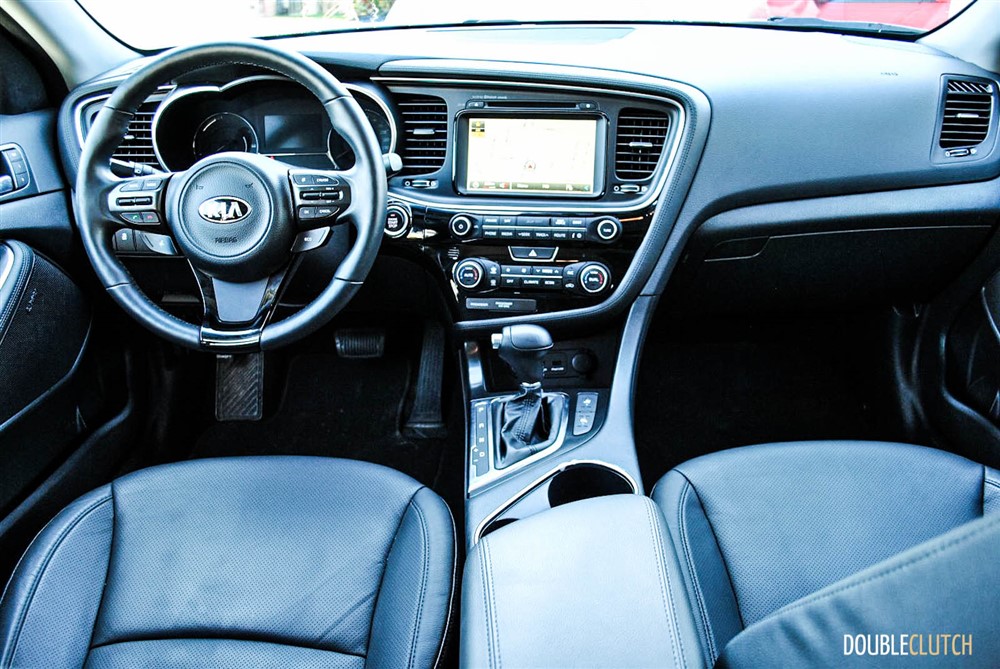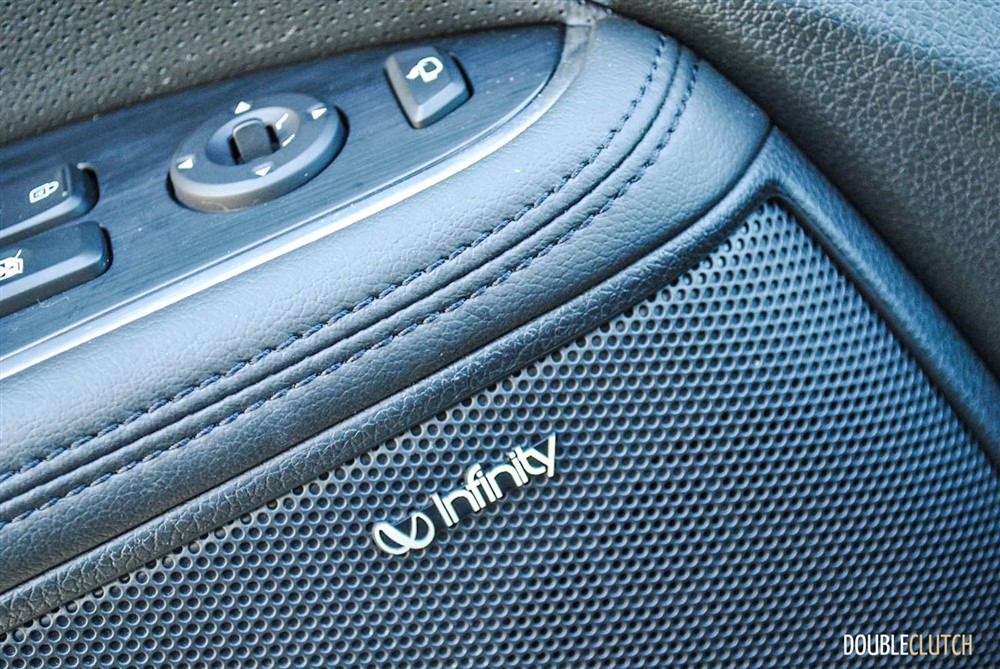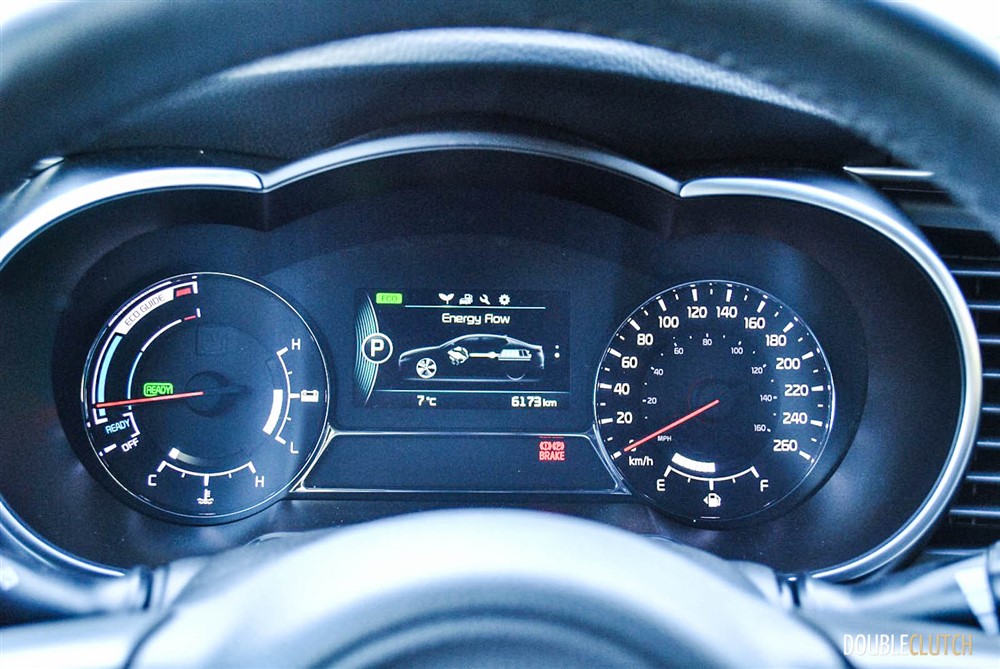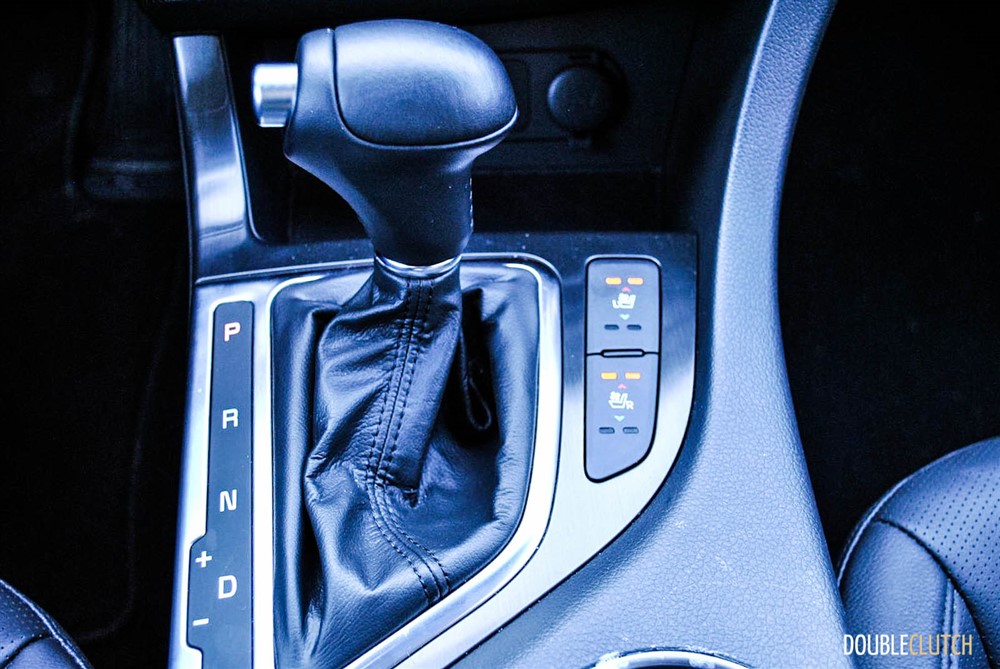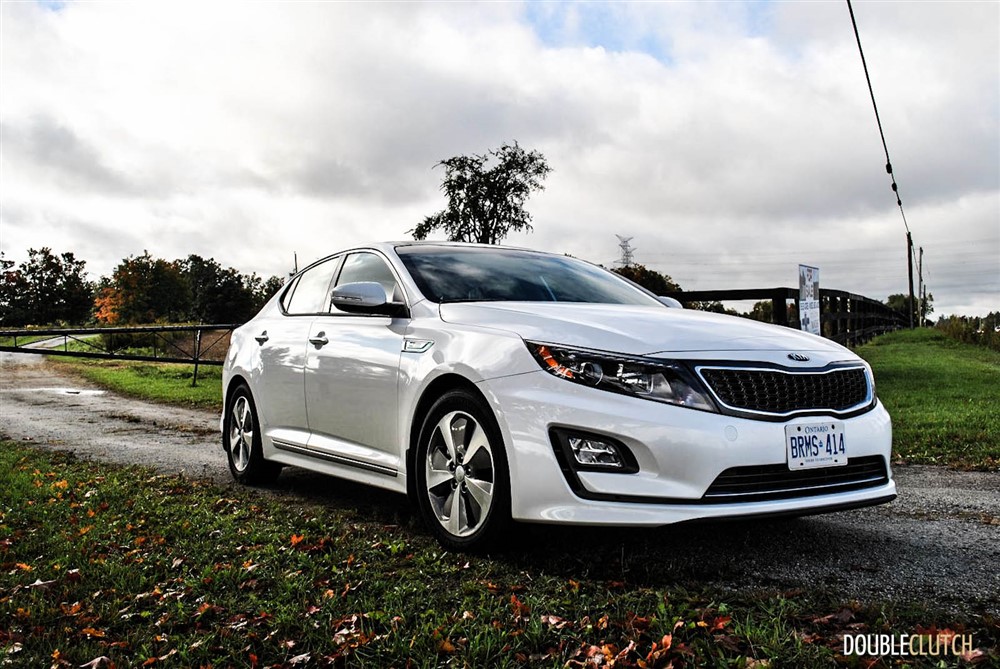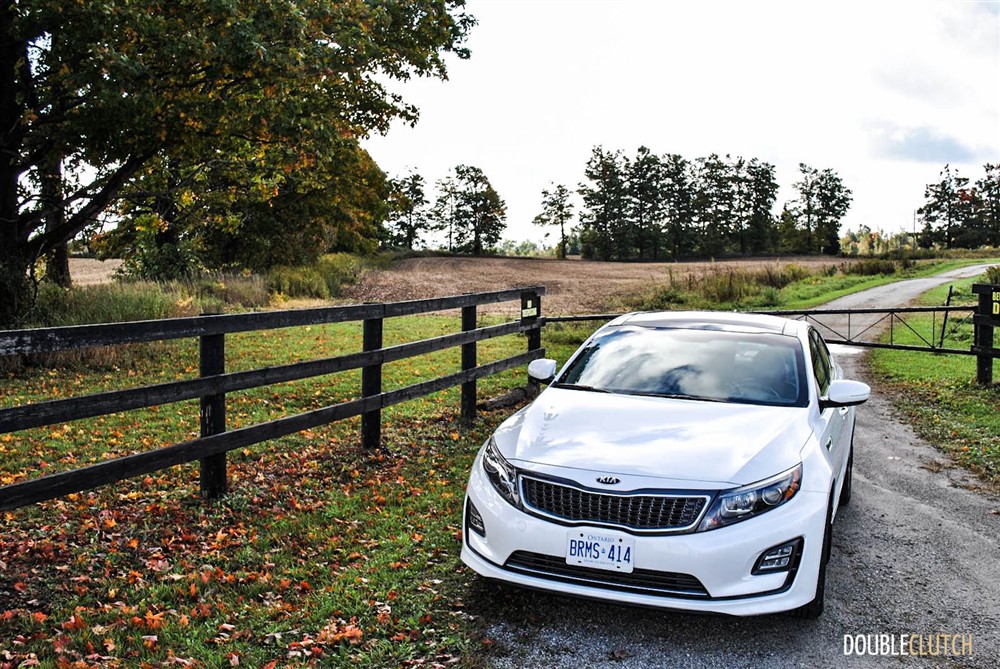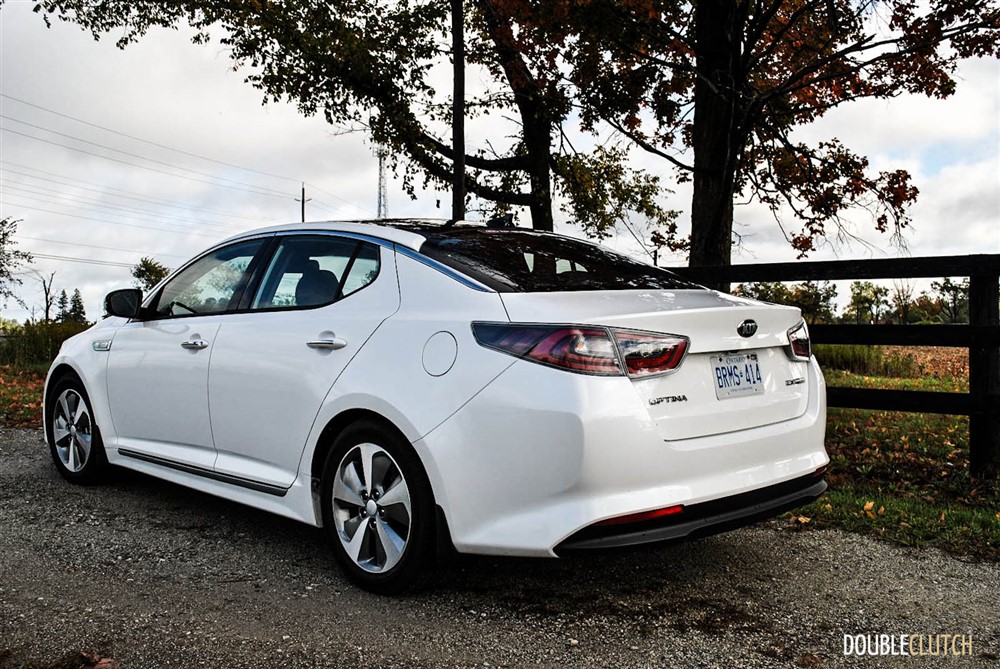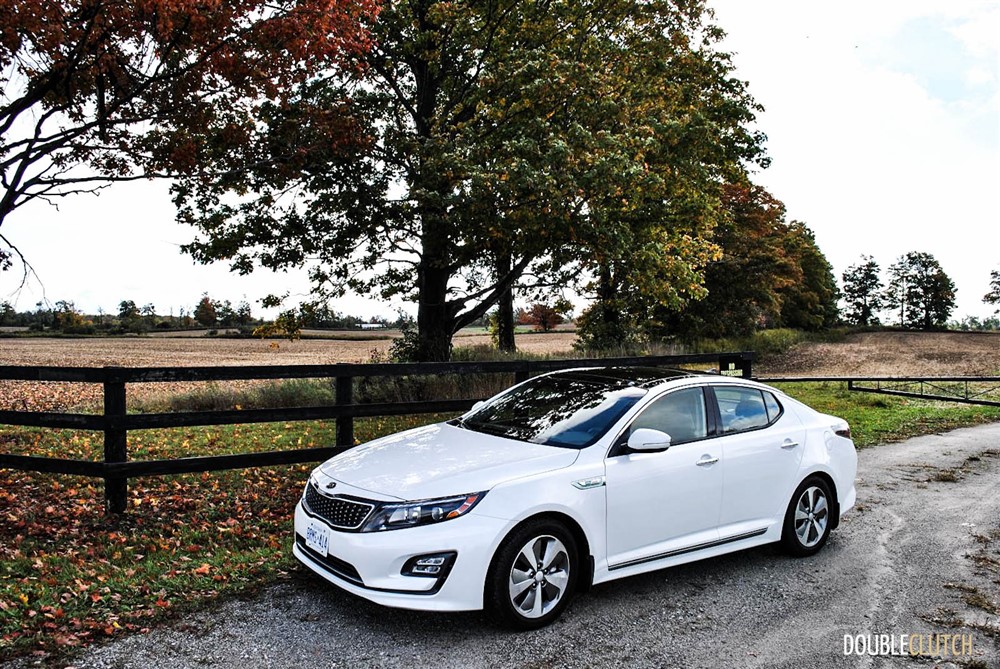Kia has always been about growth; growth through offering their customers a value that can’t be found anywhere else. Recently Kia has managed to perfect that formula and has been pumping out some very impressive examples of value at its finest, so it’s only natural for them to target the ever-growing hybrid market. With a successful and well-respected mid-size sedan platform at their disposal, the birth of the Optima Hybrid makes perfect sense. To find out for myself whether Kia had found a way to squeeze value into an increasingly competitive segment, I secured the keys to a 2015 Kia Optima Hybrid, loaded with the EX Premium package.
Most hybrids are subtle, and the Optima is no exception. In fact, you’d be pretty hard pressed to spot the differences between my tester and a regular non-hybrid Optima. The biggest difference is the wheels, where a normal Optima EX comes with some gorgeous 19” rims, the hybrid comes with the aerodynamic 17s. They certainly don’t have the flash of the 19s, but who needs flash when you’re saving money anyway? Beyond the wheels there are a few hybrid badges and a 1” lower ride height – again, all in the name of aerodynamics. I do think that the Optima is generally a good looking car, but my white tester has a tendency to just fade away into the surrounding traffic, making it very anonymous. Now depending on your own perspective, that may not be a bad thing.
The interior is also largely unchanged from the standard Optima, and this is a great thing. Personally, I am a big fan of the interior layout and design approach Kia has used. The dashboard, for instance, manages to look interesting and high-tech, yet everything is exactly where you’d expect it to be and is very easy to operate. The whole interior has sort of a blacked-out feeling to it; black leather, black soft touch plastics, glossy black accenting. With just a few pieces of silver, it all works together very nicely.
The dual pane panoramic sunroof lets in tons of natural light, so despite all the darkness, the space still feels bright and pleasant. My only wish is that Kia could step up the quality of the materials used on all of the “frequent touch” areas. Things like gear shift knobs, the wiper control stalk, turn signal indicator and even the door handles are made of a mid-range plastic and feel just a little cheap when you operate them. Improving the materials here would go a long way to completing the classy feel inside the Optima.
Like most top-trim level Kias, in the $38,000 Optima hybrid EX Premium, you get a full gamut of all the latest and greatest comfort and technology features. The exceptionally comfortable seats are heated all the way around, as well as cooled up front. The seats are complimented by a very effective heated steering wheel, rain sensing wipers and power folding side mirrors. UVO is the name of the Microsoft-based infotainment system used in the Kia to control everything from Bluetooth connectivity to audio and navigation systems. It’s very simple and easy to use and has quickly become one of my favorite systems in the business.
Speaking of audio, my tester came equipped with an 8-speaker Infinity sound system that I was a little surprised to find in a hybrid- subwoofer and all. My only complaint from a features perspective is that I found the satellite radio reception unusually weak. I suspect it’s likely an issue isolated to my test car, but if you’re a satellite radio fanatic you’ll want to spend some time testing the system if you’re considering an Optima.
For a midsizer, both front and rear seating offer plenty of space and there are no noticeable space sacrifices for the hybrid’s batteries in the cabin. Even the trunk is rather large given the amount of battery power that this car lugs around, meaning the only real compromise from a space perspective is the fact that the rear seats do not fold down to allow for larger items to pass through.
Continuing the theme, there’s not a lot of sacrifice to be made behind the wheel of the Kia Optima either. Despite the additional weight of the hybrid system, the Optima does handle competently and the additional weight is seldom felt. The steering is light and reasonably responsive; however, it does feel a little over-assisted and electronic. Clearly though, the Optima hybrid isn’t a sports car, or even a sports sedan; but its 2.4L Atkinson cycle 4-cylinder puts out 159 horsepower, and combined with the electric power plant gives the Optima an adequate 199 horsepower. It’s not what I would consider slow by any means. The electric motor provides plenty of torque, so laying your foot into the accelerator to overtake on the highway does wake the car up promptly to make short work of slow traffic. If utilizing “Eco Mode” to maximize fuel savings, throttle response is dulled and the 6-speed automatic becomes very reluctant to down-shift. Given that hybrids are all about saving fuel, I am happy to leave the car in Eco Mode and just enjoy the savings anyhow.
The ride in the Optima is also very pleasant. It’s not as luxurious as the larger Hyundai Genesis sedan I drove a couple weeks ago, but it’s a confident, taunt and comfortable ride. It does a great job muffling the rough and loud city streets, and makes highway cruising an absolute dream. I’ve said it before, but there are few more satisfying feelings than rolling down the highway at speed, in complete comfort, in “EV” (full electric) mode knowing that in that moment you’re not burning a drop of fuel.
Kia has succeeded in taking what is a great mid-size sedan and building a very compelling and competitive hybrid. At only about $3000 more than a similarly equipped non-hybrid Optima, that’s an exceptional value and anyone shopping in the midsized sedan market really owes it to themselves to check out the hybrid option. With cars like this Optima proving that owning a hybrid doesn’t have to mean giving up practicality, convenience or comfort, these fuel saving technological masterpieces start to make a lot more sense for many people; especially when they’re this nicely-appointed!






